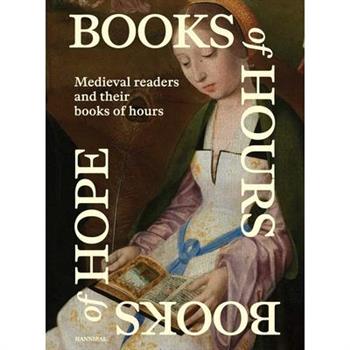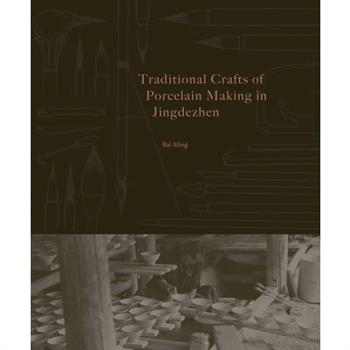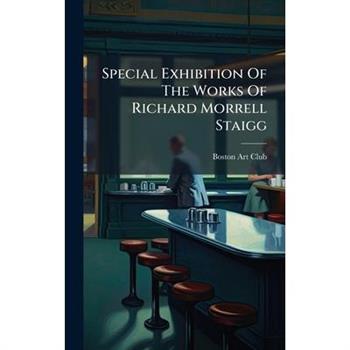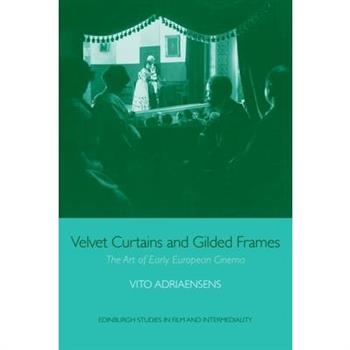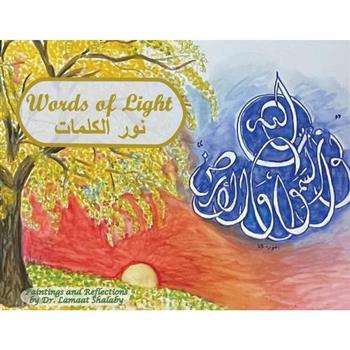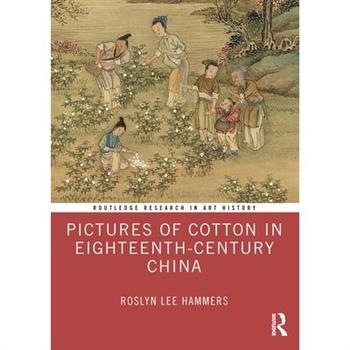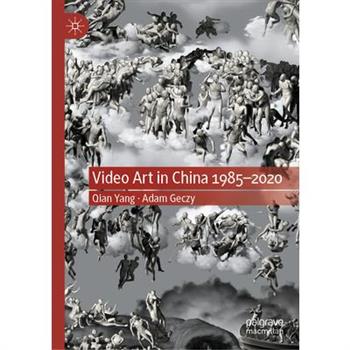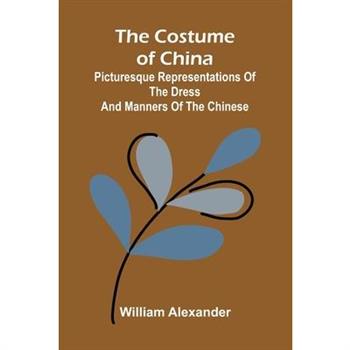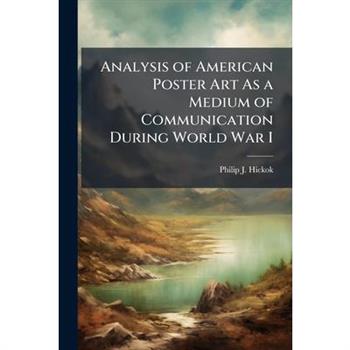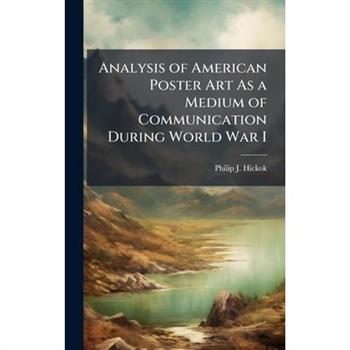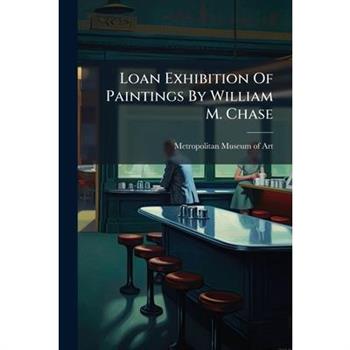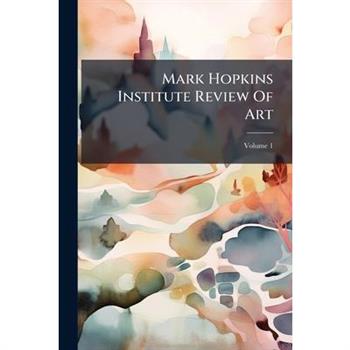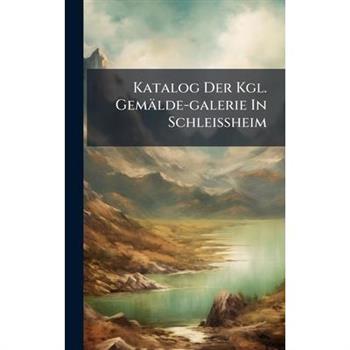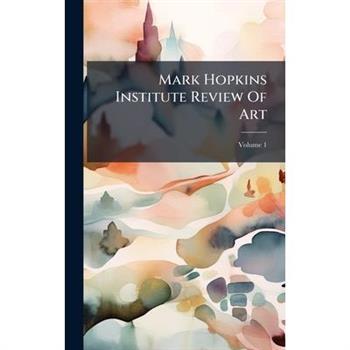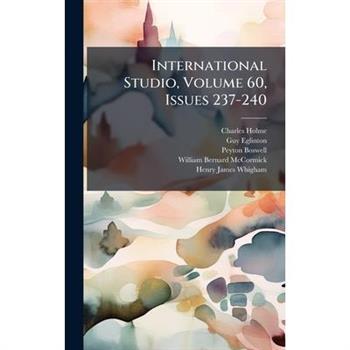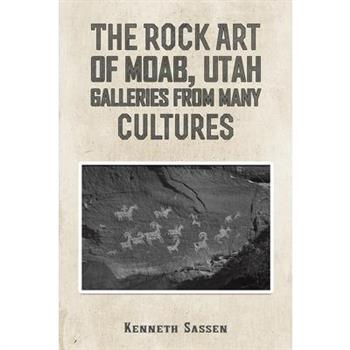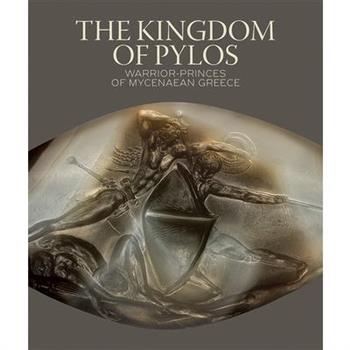Kitaoka Fumio
Kitaoka Fumio (1918 - April 23, 2007) was a Japanese artist trained in oil painting, and who later became interested in woodblock printing.Kitaoka was born in Tokyo in 1918 and studied oil painting with Fujishima Takeji at the Tokyo School of Fine Arts from 1936 to 1941. In his third and fourth years, he was instructed in woodblock printing by Un'ichi Hiratsuka.In 1945 he was sent to occupied Manchuria to work with the Japanese government's Northeast Asia Culture Development Society. While in Manchuria, he became interested in contemporary social-realist Chinese monochrome prints.In 1955, he moved to Paris to study wood engraving at the ?cole des Beaux Arts, and then to the United States in 1964-65 to teach at the Minneapolis School of Art, and the Pratt Institute in Brooklyn, New York where he taught printmaking, contributing to the spread of Japanese printmaking traditions. He served as Director of the Japanese Artists Association and was named an honorary member of the Japan Print Association. Kitaoka died of pneumonia on April 23, 2007.Kitaoka explored both realistic and abstract styles, finally settling later in life on a style that embraced both realism and abstraction in brightly colored landscapes
Special Exhibition Of The Works Of Richard Morrell Staigg
Explore the artistic legacy of Richard Morrell Staigg in this special exhibition catalog from the Boston Art Club. Showcasing a curated selection of Staigg's works, this catalog offers insights into his techniques, subjects, and contributions to American art. Delve into the world of a notable 19th-century artist through beautifully reproduced images and informative commentary. This exhibition catalog is a valuable resource for art historians, collectors, and anyone interested in American art history.This work has been selected by scholars as being culturally important, and is part of the knowledge base of civilization as we know it. This work was reproduced from the original artifact, and remains as true to the original work as possible. Therefore, you will see the original copyright references, library stamps (as most of these works have been housed in our most important libraries around the world), and other notations in the work.This work is in the public domain in the United States of America, and possibly other nations. Within the United States, you may freely copy and distribute this work, as no entity (individual or corporate) has a copyright on the body of the work.As a reproduction of a historical artifact, this work may contain missing or blurred pages, poor pictures, errant marks, etc. Scholars believe, and we concur, that this work is important enough to be preserved, reproduced, and made generally available to the public. We appreciate your support of the preservation process, and thank you for being an important part of keeping this knowledge alive and relevant.
Manga
A groundbreaking story of Japanese comics from their nineteenth-century origins to the present day The immensely popular art form of manga, or Japanese comics, has made its mark across global pop culture, influencing film, visual art, video games, and more. This book is the first to tell the history of comics in Japan as a single, continuous story, focusing on manga as multipanel cartoons that show stories rather than narrate them. Eike Exner traces these cartoons' gradual evolution from the 1890s until today, culminating in manga's explosion in global popularity in the 2000s and the current shift from print periodicals to digital media and smartphone apps. Over the course of this 130-year history, Exner answers questions about the origins of Japanese comics, the establishment of their distinctive visuals, and how they became such a fundamental part of the Japanese publishing industry, incorporating well-known examples such as Dragon Ball and Sailor Moon, as well as historical manga little known outside of Japan. The book pays special attention to manga's structural development, examining the roles played not only by star creators but also by editors and major publishers such as Kōdansha that embraced comics as a way of selling magazines to different, often gendered, readerships. This engaging narrative presents extensive new research, making it an essential read for enthusiasts and experts alike.
Velvet Curtains and Gilded Frames
Velvet Curtains and Gilded Frames explores the intermedial context of early cinema. It tackles the first European feature films' intricate relationship with its sister arts to reveal that the period referred to by historians as the "long nineteenth century" was one in which Bourgeois Realism reigned supreme. The nineteenth-century rise of the middle class coincided with realism becoming the dominant artistic mode in both form and content, leading to a revival of genre painting in the art academies; the supremacy of the social melodrama on the stage; and the advent of Pictorialism in photography. In its quest for artistic legitimacy, European filmmakers sought to win over middle-class audiences with films based on popular works of art - the first "art films" - by employing similar visual and narrative strategies as its artistic counterparts.
Words of Light
This is Dr. Lamaat Shalaby's first book. This collection of paintings and reflections are the original work of Dr. Lamaat Shalaby. She is an avid painter scientist who is passionate about expressing the beauty of Allah (SWT)'s perfect words and creations through art.
Winchester, Painted by Wilfrid Ball
Discover the enchanting world of "Winchester," beautifully painted by Wilfrid Ball, a stunning homage to one of England's most historic cities. This captivating book invites readers to explore the scenic views of Winchester through exquisite watercolor techniques that bring architectural illustrations to life. Once lost to time, this remarkable work has been out of print for decades, but thanks to Alpha Editions, it has been meticulously restored for today s and future generations. This edition is not just a reprint; it s a collector s item and a cultural treasure, celebrating British art history and the rich heritage of English landscape painting. "Winchester" captures the essence of the city, weaving together its historical significance with an appreciation for art that resonates with both casual readers and classic literature collectors. Each page serves as a window into the past, igniting a passion for art appreciation and cultural heritage. Dive into this timeless masterpiece and experience the beauty of Winchester like never before. Perfect for those who cherish the elegance of classic art books, this volume is a must-have for anyone looking to enrich their library with a piece of history. Embrace the allure of Wilfrid Ball's artistry and let "Winchester" inspire your imagination today!
Beverly McIver
What can the lived experience of acclaimed painter Beverly McIver teach us about life as an African American woman artist raised in the American South, and what insights can we glean about the wider art world?Expanding on their original conversation stemming from the artists' retrospective exhibition, Full Circle, painter Beverly McIver and curator Kim Boganey delve into Beverly's life journey from her origins in Greensboro, North Carolina, to her struggles in education, her growth as an artist and caretaker, and her development as a professor. Exploring captivating, shared stories, the friends touch on themes of identity, race, caretaking, death, and depression, and how this has impacted Beverly's artistic practice.Offering thought-provoking insight into the art world, how it functions, the challenges artists of color in particular can face, and the opportunities there are for the next generation, this book is ideal reading for students of Art and Design, Art Practice, Art History, Black Studies, Gender Studies, and Disability Studies, as well as Art practitioners and curators.
Forest, Rock, and Stream; A series of twenty steel line-engravings
Immerse yourself in the breathtaking beauty of nature with "Forest, Rock, and Stream," a stunning collection of twenty steel line engravings that capture the essence of the great outdoors. This exquisite volume, now republished by Alpha Editions after decades of being out of print, is a celebration of the natural world, offering readers an opportunity to experience the serene landscapes, vibrant wildlife, and intricate botanical illustrations that have inspired generations. Each engraving serves as a portal to a world of forest scenery and scenic landscapes, showcasing the artistic mastery of its time. This edition is not merely a reprint; it s a collector's item and a cultural treasure, meticulously restored for today s and future generations to cherish. Whether you are a casual reader seeking inspiration or a classic literature collector eager to enrich your library, this book promises to captivate your imagination. Delve into the harmony of nature-themed decor with these vintage nature prints that evoke a sense of tranquility and wonder. "Forest, Rock, and Stream" is more than a book; it s an invitation to reconnect with the natural beauty that surrounds us. Don t miss your chance to own this remarkable piece of literary and artistic history perfect for adorning your home or as a thoughtful gift for nature lovers. Rediscover the magic of the wild today!
Chroma
New discoveries of surviving color on sculpture spanning two millennia and across the globe, from ancient Greece to Tenochtitl獺n to Renaissance Europe Many ancient and early modern works that are viewed in monochrome today were once painted in vibrant colors. Lost to time until recently, the pigments and other surface treatments that originally adorned these objects offer a deeper appreciation of the cultures from which they originate. This handsome volume features new research by more than thirty international experts in polychromy, including art historians, conservators, scientists, and photographers. Identified through advanced technologies, scientific analyses, and in-depth research, their discoveries of surviving traces of color span the globe and vary in material, including an Archaic Greek marble sphinx, an ancient Near Eastern cloisonn矇 furniture plaque, Mexica (Aztec) limestone sculptures, and medieval and Renaissance European marbles and bronzes. This wide-ranging publication explores how these works further our understanding of ancient ideas around skin color, race, and gender; summarizes recent advances in the field; and considers polychromy's controversial rediscovery and modern reception--highlighting the role of reconstructions such as 3D-printed replicas and virtual animations in contemporary museum practice, as well as the resurgence of polychromy techniques in postmodern and contemporary European architecture. Published by The Metropolitan Museum of Art/Distributed by Yale University Press
The True Size of Africa
A fresh lens capturing the cosmos of Africa and its everlasting presence in our global societies. This lavishly illustrated volume approaches the vast continent of Africa from a variety of viewpoints; beyond prejudice and stereotypes, via cultural history and contemporary art: by means of permanent changes of perspective and a diversity of artistic voices. The history of humankind meets the colonial past and the omnipresence of aspects of Africa in many regions of the world. On the one hand, surprising views of Africa are focused on from Europe. And on the other, works and installations by Africans or protagonists from the diaspora present ideas, impulses and identities which all signify Africa. The texts illustrate the broad time frame from the first humans to Pan-Africanism and Afro-Futurism, as well as present literary and philosophical narratives. ARTISTS: DELE ADEYEMO, JOHN AKOMFRAH, JAMES GREGORY ATKINSON, SAMMY BALOJI, AR?B?NOR BASS?NE, MEMORY BIWA, MAR?A MAGDALENA CAMPOS-PONS, CATPC, OMAR VICTOR DIOP, SOKARI DOUGLAS CAMP, WILLIAM KENTRIDGE, KONGO ASTRONAUTS, SUSANA PILAR DELAHANTA MANTIENZO, ROM?O MIVEKANNIN, ZANELE MUHOLI, JOS?FA NTJAM, KALOKI NYAMAI, EMEKA, OGBOH, ZINEB SEDIRA, SANDRA SEGHIR, YINKA SHONIBARE, THE SINGH TWINS, G?RALDINE TOBE, KARA WALKER, CARRIE MAE WEEMS
Video Art in China 1985-2020
This is the first book that offers a comprehensive account of video art after the Cultural Revolution in China with a special emphasis on the way it progressed together with phenomenal socio-economic transformations that began in the 1980s. It examines its development against social changes and pressures, looking at such aspects as the growth of artistic and cultural groups, exhibition spaces and art schools. Charting these changes, it prizes out the many zones of influence by the dominant United States while also marking out the many independent features of Chinese video art and the conditions that shaped them.
The Costume of China; Picturesque Representations of the Dress and Manners of the Chinese
Step into a vibrant world where history and culture intertwine with "The Costume of China: Picturesque Representations of the Dress and Manners of the Chinese." This captivating book, now republished by Alpha Editions after decades of being out of print, offers an exquisite visual guide to the rich tapestry of traditional Chinese attire and the cultural heritage of China. Through stunning illustrations and insightful commentary, readers will explore the evolution of Chinese clothing styles, from the elaborate robes of emperors to the everyday garments of common folk. Each page reveals the intricate details of Chinese costume history, showcasing how fashion reflects the values, traditions, and manners of its time. This edition is not just a reprint; it s a cultural treasure meticulously restored for today s and future generations. Perfect for casual readers and classic literature collectors alike, it invites you to appreciate the artistry of costume design in China and the enduring legacy of its traditional dress. Don't miss your chance to own this remarkable piece of history, a true collector s item that celebrates the beauty and complexity of Chinese fashion. Dive into the enchanting world of Chinese cultural attire and discover the stories woven into every thread.
Doodles, the Sunshine Boy
Step into a world of whimsy and wonder with "Doodles, the Sunshine Boy," a cherished children s adventure book that has been out of print for decades and is now lovingly republished by Alpha Editions. This beautifully restored edition is not just a reprint; it s a collector s item and a cultural treasure, designed for today s and future generations to enjoy. Join Doodles, a spirited young boy whose infectious joy and imaginative storytelling take readers on a heartwarming journey filled with friendship, laughter, and uplifting messages. Through vibrant illustrations and engaging tales, this family-friendly reading experience encourages young minds to dream big and embrace the magic of childhood. "Doodles, the Sunshine Boy" holds a unique literary significance as a timeless piece of children's fiction that resonates with both casual readers and classic literature collectors alike. Its themes of positivity and connection make it an ideal choice for bedtime stories, while its enchanting narrative captivates early childhood readers. Rediscover the charm of this illustrated children's story and let Doodles inspire your little ones to explore their own adventures. Perfect for parents seeking imaginative storytelling and positive messages for kids, this book is a must-have addition to any young reader's library. Embrace the joy of reading with "Doodles, the Sunshine Boy" and ignite the spark of creativity in your children today!
Impressionism and Paris 12-Month 2026 Engagement Calendar
Travel to Paris with the Impressionists with this spiral-bound weekly desk diary from The Metropolitan Museum of Art filled with 56 masterpieces showcasing the City of Lights during the Belle Epoque. The city of Paris and its parks and gardens, its boulevards and cafes, and the Parisians and their pursuits were the enduring subjects of the Impressionists and Post-Impressionists, all featured in this new engagement calendar from the MET. Visit a luxuriant garden in Monet's Parc Monceau. Stroll the broad, busy avenues with Pissarro's Boulevard Montmartre on a Winter Morning. Go behind the scenes at the ballet with Degas's Dance Class or spend a relaxing hour with Cassatt's Cup of Tea. These and other beautifully reproduced works by Renoir, Manet, Seurat, and more are accompanied by brief texts that provide insights about the works of art, while each page features ample space for notes and appointments. Features include: Cover painting by Camille Pissarro (French, 1830-1903) 7" x 9" (14" x 9" open) Spiral-bound paperback Printed on FSC-certified paper with soy-based ink Plastic-free packaging Packaged in a sturdy, full-color gift box Spans 12 months from January-December 2026 Sunday-Saturday weeks Pages alternate between glossy for images and matte for calendar pages for ease of writing Generous grid space for notes, appointments, and reminders Official major world holidays and observances Moon phases, based on Universal Time Year-at-a-glance pages for 2026 and 2027 Extra lined pages at back for notes, goals, and more An identifying caption and a brief descriptive historical text accompany each work of art
Impressionism and Post-Impressionism 2026 Mini Wall Calendar
Enjoy 13 stunning paintings by Impressionist and Post-Impressionist masters with this mini-sized 12-month calendar from The Metropolitan Museum of Art. From landscapes and seascapes to still lifes and portraits, this 12-month calendar highlights 13 vibrant paintings by renowned Impressionist and Post-Impressionist artists, including Vincent van Gogh, Claude Monet, Berthe Morisot, Camille Pissarro, and Auguste Renoir. Throughout the year, journey from Paris to Provence and take pleasure in these breathtaking masterpieces. All of the works of art featured are from the world-famous collection of The Metropolitan Museum of Art. Features include: 7" x 7" (7" x 14" open)--a great size for small spaces Printed on FSC-certified paper with soy-based ink Plastic-free packaging Planning spread for September-December 2025 Spans January-December 2026 Official major world holidays and observances Moon phases, based on Universal Time Information about each work of art shown
Views In Scotland Drawn From Nature
Views In Scotland Drawn From Nature showcases the picturesque landscapes and historical sites of Scotland as seen through the eyes of Francis Nicholson. This collection offers a glimpse into 19th-century Scotland, capturing its natural beauty and architectural heritage. Each view provides a unique artistic perspective on the Scottish countryside, making this a valuable resource for art historians, travel enthusiasts, and anyone interested in the visual history of Scotland.The detailed depictions offer a window into a bygone era, preserving the charm and character of Scotland's most iconic locations. This book is a treasure for those seeking to explore Scotland's rich visual heritage and appreciate the artistry of landscape drawing.This work has been selected by scholars as being culturally important, and is part of the knowledge base of civilization as we know it. This work was reproduced from the original artifact, and remains as true to the original work as possible. Therefore, you will see the original copyright references, library stamps (as most of these works have been housed in our most important libraries around the world), and other notations in the work.This work is in the public domain in the United States of America, and possibly other nations. Within the United States, you may freely copy and distribute this work, as no entity (individual or corporate) has a copyright on the body of the work.As a reproduction of a historical artifact, this work may contain missing or blurred pages, poor pictures, errant marks, etc. Scholars believe, and we concur, that this work is important enough to be preserved, reproduced, and made generally available to the public. We appreciate your support of the preservation process, and thank you for being an important part of keeping this knowledge alive and relevant.
Analysis of American Poster Art As a Medium of Communication During World War I
Effective communication on a massive scale between the government and the people of the United States was essential between 1917 and 1919 to mobilize the American people in support of the First World War effort. The pictorial poster is a medium of visual communication that tells a story, usually with few or no words. This study examines the use of the pictorial poster as the primary medium of communicating the government's needs to the American people for the waging of war. The study is illustrated with 129 plates, consisting primarily of reproductions of World War I war posters. A review of the literature dealing with poster art, the temper of the times (1914-1919), American military heritage, and examination of original and photo reproductions of war posters provide the basis for analysis of the visual communication effort. Categories of need are defined as groupings of war posters with similar themes designed to reinforce, or change, public attitude or behavior to produce tangible products that answered governmental needs. This study found six primary categories of need: 1) awareness of the threat, 2) the call for resources, 3) societal support of the combatants and the allied effort, 4) humanitarian, 5) finish the job-on to victory, and 6) retrenchment. The categories of need, themes, messages, and symbols are summarized in a matrix at plate 129. The principles of pictorial poster design are identified, and applied to selected posters to evaluate the effectiveness of the visual message. Analysis resulted in the following conclusions: 1) the pictorial poster was successful in gaining general public support for the American First World War effort; 2) the principles of pictorial poster design are applicable to visual communication regardless of the media; and 3) the graphic art poster can fulfill an important and mission-related external role in today's Army.This work has been selected by scholars as being culturally important, and is part of the knowledge base of civilization as we know it. This work was reproduced from the original artifact, and remains as true to the original work as possible. Therefore, you will see the original copyright references, library stamps (as most of these works have been housed in our most important libraries around the world), and other notations in the work.This work is in the public domain in the United States of America, and possibly other nations. Within the United States, you may freely copy and distribute this work, as no entity (individual or corporate) has a copyright on the body of the work.As a reproduction of a historical artifact, this work may contain missing or blurred pages, poor pictures, errant marks, etc. Scholars believe, and we concur, that this work is important enough to be preserved, reproduced, and made generally available to the public. We appreciate your support of the preservation process, and thank you for being an important part of keeping this knowledge alive and relevant.
The Trembling Hand
A provocative, revelatory history of British Romanticism that examines the impact of the transatlantic slave economy on the lives and times of some of our most beloved poets--with urgent lessons for today "[P]owerful, revelatory. . . . [A]s a writer Nabugodi is warm and witty, her prose both intimate and animated. . . . A masterpiece." --Kerri Arsenault, The Boston Globe "One will never look at these poets in quite the same way." --Michael Gorra, New York Times A scrap of Coleridge's handwriting. The sugar that Wordsworth stirred into his teacup. A bracelet made of Mary Shelley's hair. Percy Shelley's gilded baby rattle. The death mask preserving Keats's calm face. Byron's silk-lined leather boot. Who would have known there could be vast worlds contained in these items? In a completely new interpretation of the Romantics and their context, Whiting Award-winning scholar and literary sleuth Mathelinda Nabugodi uses these items to frame her interrogation of the poets, leading us on an expansive journey through time and memory, situating us in depth of their world, and her own. "Freedom, liberty, autonomy are the period's favorite words," Nabugodi writes. Romantic poets sought truth in the depth of their souls and in the mind's unbounded regions. Ideals of free speech and human rights were being forged. And yet the period was defined by a relentless commitment to the displacement and stolen labor of millions. Romanticism, she argues, can no longer be discussed without the racial violence with which it was complicit. Still, rather than using this idea to rehash Black pain and subjugation, she mines the archives for instances of resistance, beauty, and joy. Nabugodi moves effortlessly between the past and present. She takes us into the physical archives and, with startling clarity, unpacks her relationships with them: what they are and should be; who built them; how they are entwined with an industry that was the antithesis of freedom; and how she feels holding the materials needed to write this book, as a someone whose ancestry is largely absent from their ledgers. The Trembling Hand presents a dazzling new way of reading the past. This transfixing, evocative book reframes not only the lives of the legendary Romantics, but also their poetry and the very era in which they lived. It is a reckoning with art, archives, and academia bound to echo through the conversation for a long time to come.
Impressionism and Paris 12-Month 2026 Deluxe Engagement Calendar
Travel to Paris with the Impressionists with this elegant, cloth-spine weekly desk diaryfrom The Metropolitan Museum of Art filled with 56 masterpieces showcasing the City of Lights during the Belle Epoque. The city of Paris and its parks and gardens, its boulevards and cafes, and the Parisians and their pursuits were the enduring subjects of the Impressionists and Post-Impressionists, all featured in this new engagement calendar from the MET. Visit a luxuriant garden in Monet's Parc Monceau. Stroll the broad, busy avenues with Pissarro's Boulevard Montmartre on a Winter Morning. Go behind the scenes at the ballet with Degas's Dance Class or spend a relaxing hour with Cassatt's Cup of Tea. These and other beautifully reproduced works by Renoir, Manet, Seurat, and more are accompanied by brief texts that provide insights about the works of art, while each page features ample space for notes and appointments. Features include: Cover painting by Camille Pissarro (French, 1830-1903) 7" x 9" (14" x 9" open) Hardcover with enclosed spiral binding and durable cloth spine Printed on FSC-certified paper with soy-based ink Plastic-free packaging Black ribbon page marker Spans 12 months from January-December 2026 Sunday-Saturday weeks Pages alternate between glossy for images and matte for calendar pages for ease of writing Generous grid space for notes, appointments, and reminders Official major world holidays and observances Moon phases, based on Universal Time Year-at-a-glance pages for 2026 and 2027 Extra lined pages at back for notes An identifying caption and a brief descriptive historical text accompany each work of art
Little Journeys To The Homes Of...
"Little Journeys to the Homes of Eminent Painters" offers a series of intimate biographical sketches by Elbert Hubbard, exploring the lives and works of some of history's most celebrated artists. Hubbard's engaging prose brings these figures to life, providing readers with insights into their creative processes, personal struggles, and enduring legacies. Originally published by the Roycroft Shop, this collection showcases Hubbard's unique blend of biographical narrative and philosophical reflection. Each journey delves into the formative influences and pivotal moments that shaped the artists' careers, offering a glimpse into the world of art and creativity. This volume invites readers to explore the homes and hearts of eminent painters, celebrating their contributions to the world of art and inspiring a deeper appreciation for their masterpieces.This work has been selected by scholars as being culturally important, and is part of the knowledge base of civilization as we know it. This work was reproduced from the original artifact, and remains as true to the original work as possible. Therefore, you will see the original copyright references, library stamps (as most of these works have been housed in our most important libraries around the world), and other notations in the work.This work is in the public domain in the United States of America, and possibly other nations. Within the United States, you may freely copy and distribute this work, as no entity (individual or corporate) has a copyright on the body of the work.As a reproduction of a historical artifact, this work may contain missing or blurred pages, poor pictures, errant marks, etc. Scholars believe, and we concur, that this work is important enough to be preserved, reproduced, and made generally available to the public. We appreciate your support of the preservation process, and thank you for being an important part of keeping this knowledge alive and relevant.
Analysis of American Poster Art As a Medium of Communication During World War I
Effective communication on a massive scale between the government and the people of the United States was essential between 1917 and 1919 to mobilize the American people in support of the First World War effort. The pictorial poster is a medium of visual communication that tells a story, usually with few or no words. This study examines the use of the pictorial poster as the primary medium of communicating the government's needs to the American people for the waging of war. The study is illustrated with 129 plates, consisting primarily of reproductions of World War I war posters. A review of the literature dealing with poster art, the temper of the times (1914-1919), American military heritage, and examination of original and photo reproductions of war posters provide the basis for analysis of the visual communication effort. Categories of need are defined as groupings of war posters with similar themes designed to reinforce, or change, public attitude or behavior to produce tangible products that answered governmental needs. This study found six primary categories of need: 1) awareness of the threat, 2) the call for resources, 3) societal support of the combatants and the allied effort, 4) humanitarian, 5) finish the job-on to victory, and 6) retrenchment. The categories of need, themes, messages, and symbols are summarized in a matrix at plate 129. The principles of pictorial poster design are identified, and applied to selected posters to evaluate the effectiveness of the visual message. Analysis resulted in the following conclusions: 1) the pictorial poster was successful in gaining general public support for the American First World War effort; 2) the principles of pictorial poster design are applicable to visual communication regardless of the media; and 3) the graphic art poster can fulfill an important and mission-related external role in today's Army.This work has been selected by scholars as being culturally important, and is part of the knowledge base of civilization as we know it. This work was reproduced from the original artifact, and remains as true to the original work as possible. Therefore, you will see the original copyright references, library stamps (as most of these works have been housed in our most important libraries around the world), and other notations in the work.This work is in the public domain in the United States of America, and possibly other nations. Within the United States, you may freely copy and distribute this work, as no entity (individual or corporate) has a copyright on the body of the work.As a reproduction of a historical artifact, this work may contain missing or blurred pages, poor pictures, errant marks, etc. Scholars believe, and we concur, that this work is important enough to be preserved, reproduced, and made generally available to the public. We appreciate your support of the preservation process, and thank you for being an important part of keeping this knowledge alive and relevant.
Little Journeys To The Homes Of...
"Little Journeys to the Homes of Eminent Painters" offers a series of intimate biographical sketches by Elbert Hubbard, exploring the lives and works of some of history's most celebrated artists. Hubbard's engaging prose brings these figures to life, providing readers with insights into their creative processes, personal struggles, and enduring legacies. Originally published by the Roycroft Shop, this collection showcases Hubbard's unique blend of biographical narrative and philosophical reflection. Each journey delves into the formative influences and pivotal moments that shaped the artists' careers, offering a glimpse into the world of art and creativity. This volume invites readers to explore the homes and hearts of eminent painters, celebrating their contributions to the world of art and inspiring a deeper appreciation for their masterpieces.This work has been selected by scholars as being culturally important, and is part of the knowledge base of civilization as we know it. This work was reproduced from the original artifact, and remains as true to the original work as possible. Therefore, you will see the original copyright references, library stamps (as most of these works have been housed in our most important libraries around the world), and other notations in the work.This work is in the public domain in the United States of America, and possibly other nations. Within the United States, you may freely copy and distribute this work, as no entity (individual or corporate) has a copyright on the body of the work.As a reproduction of a historical artifact, this work may contain missing or blurred pages, poor pictures, errant marks, etc. Scholars believe, and we concur, that this work is important enough to be preserved, reproduced, and made generally available to the public. We appreciate your support of the preservation process, and thank you for being an important part of keeping this knowledge alive and relevant.
Tour Of A German Artist In England
Tour Of A German Artist In England by Johann David Passavant offers a fascinating glimpse into the English art scene of the 19th century. In these volumes, Passavant, a German artist, recounts his travels through England, providing detailed observations of private art galleries and insightful remarks on the state of art during this period. This work is a valuable resource for art historians and enthusiasts, offering a unique perspective on the artistic landscape of England through the eyes of a discerning foreign visitor.Passavant's detailed descriptions and critical analyses provide a rich understanding of the art and culture of the time, making this book an engaging read for anyone interested in the intersection of art, travel, and history.This work has been selected by scholars as being culturally important, and is part of the knowledge base of civilization as we know it. This work was reproduced from the original artifact, and remains as true to the original work as possible. Therefore, you will see the original copyright references, library stamps (as most of these works have been housed in our most important libraries around the world), and other notations in the work.This work is in the public domain in the United States of America, and possibly other nations. Within the United States, you may freely copy and distribute this work, as no entity (individual or corporate) has a copyright on the body of the work.As a reproduction of a historical artifact, this work may contain missing or blurred pages, poor pictures, errant marks, etc. Scholars believe, and we concur, that this work is important enough to be preserved, reproduced, and made generally available to the public. We appreciate your support of the preservation process, and thank you for being an important part of keeping this knowledge alive and relevant.
Tour Of A German Artist In England
Tour Of A German Artist In England by Johann David Passavant offers a fascinating glimpse into the English art scene of the 19th century. In these volumes, Passavant, a German artist, recounts his travels through England, providing detailed observations of private art galleries and insightful remarks on the state of art during this period. This work is a valuable resource for art historians and enthusiasts, offering a unique perspective on the artistic landscape of England through the eyes of a discerning foreign visitor.Passavant's detailed descriptions and critical analyses provide a rich understanding of the art and culture of the time, making this book an engaging read for anyone interested in the intersection of art, travel, and history.This work has been selected by scholars as being culturally important, and is part of the knowledge base of civilization as we know it. This work was reproduced from the original artifact, and remains as true to the original work as possible. Therefore, you will see the original copyright references, library stamps (as most of these works have been housed in our most important libraries around the world), and other notations in the work.This work is in the public domain in the United States of America, and possibly other nations. Within the United States, you may freely copy and distribute this work, as no entity (individual or corporate) has a copyright on the body of the work.As a reproduction of a historical artifact, this work may contain missing or blurred pages, poor pictures, errant marks, etc. Scholars believe, and we concur, that this work is important enough to be preserved, reproduced, and made generally available to the public. We appreciate your support of the preservation process, and thank you for being an important part of keeping this knowledge alive and relevant.
Lely And Kneller
Lely and Kneller delves into the lives and artistic contributions of two pivotal figures in 17th and early 18th-century British portraiture: Sir Peter Lely and Sir Godfrey Kneller. This meticulously researched volume by Charles Henry Collins Baker offers a detailed examination of their careers, techniques, and the impact they had on the development of art in England. Exploring their individual styles and the historical context in which they worked, the book provides insights into the artistic trends of the time and the patronage system that shaped their careers. From Lely's influence in establishing a distinctive style of portraiture to Kneller's role in capturing the likenesses of royalty and prominent figures, this book offers a comprehensive overview of their artistic legacies. Lely and Kneller is an essential resource for art historians, students, and anyone interested in the history of British art.This work has been selected by scholars as being culturally important, and is part of the knowledge base of civilization as we know it. This work was reproduced from the original artifact, and remains as true to the original work as possible. Therefore, you will see the original copyright references, library stamps (as most of these works have been housed in our most important libraries around the world), and other notations in the work.This work is in the public domain in the United States of America, and possibly other nations. Within the United States, you may freely copy and distribute this work, as no entity (individual or corporate) has a copyright on the body of the work.As a reproduction of a historical artifact, this work may contain missing or blurred pages, poor pictures, errant marks, etc. Scholars believe, and we concur, that this work is important enough to be preserved, reproduced, and made generally available to the public. We appreciate your support of the preservation process, and thank you for being an important part of keeping this knowledge alive and relevant.
Historische Erkl瓣rungen Der Gem瓣lde, Welche Herr Gottfried Winkler In Leipzig Gesammlet
"Historische Erkl瓣rungen Der Gem瓣lde, Welche Herr Gottfried Winkler In Leipzig Gesammlet" offers historical explanations of the paintings collected by Gottfried Winkler in Leipzig. Authored by Franz Wilhelm Kreuchauf, this work provides insight into the art historical context of Winkler's collection, shedding light on the artistic tastes and cultural landscape of the time. The book serves as a valuable resource for understanding 18th-century art collecting and appreciation.This work has been selected by scholars as being culturally important, and is part of the knowledge base of civilization as we know it. This work was reproduced from the original artifact, and remains as true to the original work as possible. Therefore, you will see the original copyright references, library stamps (as most of these works have been housed in our most important libraries around the world), and other notations in the work.This work is in the public domain in the United States of America, and possibly other nations. Within the United States, you may freely copy and distribute this work, as no entity (individual or corporate) has a copyright on the body of the work.As a reproduction of a historical artifact, this work may contain missing or blurred pages, poor pictures, errant marks, etc. Scholars believe, and we concur, that this work is important enough to be preserved, reproduced, and made generally available to the public. We appreciate your support of the preservation process, and thank you for being an important part of keeping this knowledge alive and relevant.
Grundriss Der Kunstgeschichte
"Grundriss Der Kunstgeschichte" is a comprehensive overview of art history, featuring 382 woodcut illustrations. Authored by Wilhelm von L?1/4bke, this foundational work provides a detailed exploration of artistic movements, architectural styles, and significant works of art. From ancient civilizations to more modern periods, the book offers insights into the evolution of art and its cultural contexts. The inclusion of numerous illustrations enhances the reader's understanding and appreciation of the discussed artworks. This book serves as an invaluable resource for students, art enthusiasts, and anyone interested in the history of visual arts and architecture.This work has been selected by scholars as being culturally important, and is part of the knowledge base of civilization as we know it. This work was reproduced from the original artifact, and remains as true to the original work as possible. Therefore, you will see the original copyright references, library stamps (as most of these works have been housed in our most important libraries around the world), and other notations in the work.This work is in the public domain in the United States of America, and possibly other nations. Within the United States, you may freely copy and distribute this work, as no entity (individual or corporate) has a copyright on the body of the work.As a reproduction of a historical artifact, this work may contain missing or blurred pages, poor pictures, errant marks, etc. Scholars believe, and we concur, that this work is important enough to be preserved, reproduced, and made generally available to the public. We appreciate your support of the preservation process, and thank you for being an important part of keeping this knowledge alive and relevant.
Kunst Und K?1/4nstler In K繹ln
"Kunst Und K?1/4nstler In K繹ln" explores the rich artistic heritage and the lives of artists in Cologne, Germany. This historical account delves into the artistic contributions and cultural significance of Cologne's artistic community. The book provides insights into the art scene, the lives of prominent artists, and the historical context that shaped their work.This work has been selected by scholars as being culturally important, and is part of the knowledge base of civilization as we know it. This work was reproduced from the original artifact, and remains as true to the original work as possible. Therefore, you will see the original copyright references, library stamps (as most of these works have been housed in our most important libraries around the world), and other notations in the work.This work is in the public domain in the United States of America, and possibly other nations. Within the United States, you may freely copy and distribute this work, as no entity (individual or corporate) has a copyright on the body of the work.As a reproduction of a historical artifact, this work may contain missing or blurred pages, poor pictures, errant marks, etc. Scholars believe, and we concur, that this work is important enough to be preserved, reproduced, and made generally available to the public. We appreciate your support of the preservation process, and thank you for being an important part of keeping this knowledge alive and relevant.
Descriptive Catalogue Of The Museum Of Art And Antiquities, In The University Of Michigan
This is a descriptive catalogue of the Museum of Art and Antiquities at the University of Michigan. It offers a detailed overview of the museum's holdings, providing valuable insights into the collections as they existed at the time of publication. This catalogue serves as a historical record, appealing to those interested in the history of museums, art history, and the development of academic collections. It is a valuable resource for researchers, historians, and anyone seeking to understand the early curation and display of art and antiquities. The "Descriptive Catalogue Of The Museum Of Art And Antiquities, In The University Of Michigan" offers a glimpse into the past, documenting a significant chapter in the university's cultural heritage.This work has been selected by scholars as being culturally important, and is part of the knowledge base of civilization as we know it. This work was reproduced from the original artifact, and remains as true to the original work as possible. Therefore, you will see the original copyright references, library stamps (as most of these works have been housed in our most important libraries around the world), and other notations in the work.This work is in the public domain in the United States of America, and possibly other nations. Within the United States, you may freely copy and distribute this work, as no entity (individual or corporate) has a copyright on the body of the work.As a reproduction of a historical artifact, this work may contain missing or blurred pages, poor pictures, errant marks, etc. Scholars believe, and we concur, that this work is important enough to be preserved, reproduced, and made generally available to the public. We appreciate your support of the preservation process, and thank you for being an important part of keeping this knowledge alive and relevant.
Living New England Artists
"Living New England Artists: Biographical Sketches, Reproductions Of Original Drawings And Paintings By Each Artist" offers a fascinating glimpse into the vibrant art scene of early 20th-century New England. This collection showcases the work and lives of prominent artists from the region, providing biographical sketches alongside reproductions of their original drawings and paintings. Frank Torrey Robinson's work captures the essence of the era, highlighting the diverse styles and artistic visions that flourished within New England's cultural landscape. This volume serves as both a historical record and a celebration of artistic talent, offering valuable insights into the lives and works of these important figures. Art enthusiasts, historians, and anyone interested in the cultural heritage of New England will find this book to be an invaluable resource. Discover the enduring legacy of these artists and their contributions to American art history.This work has been selected by scholars as being culturally important, and is part of the knowledge base of civilization as we know it. This work was reproduced from the original artifact, and remains as true to the original work as possible. Therefore, you will see the original copyright references, library stamps (as most of these works have been housed in our most important libraries around the world), and other notations in the work.This work is in the public domain in the United States of America, and possibly other nations. Within the United States, you may freely copy and distribute this work, as no entity (individual or corporate) has a copyright on the body of the work.As a reproduction of a historical artifact, this work may contain missing or blurred pages, poor pictures, errant marks, etc. Scholars believe, and we concur, that this work is important enough to be preserved, reproduced, and made generally available to the public. We appreciate your support of the preservation process, and thank you for being an important part of keeping this knowledge alive and relevant.
100 Great Eastern Works of Art
This beautifully illustrated hardback looks at 100 of the most fascinating works of art to have been created from the Eastern world, filled with full-color artworks. Moving from the Near East and Middle East across to the Pacific and Oceania by way of India, China and Japan, John Finley explores the incredible art that the Eastern world has to offer. Whether it be an example of indigenous art, a Japanese woodblock print, an architectural gem, such as Angkor Wat, a fine porcelain or alabaster vase, an incredible item of jewellery or a delicate and intricate miniature Persian painting, the breadth and craftsmanship is celebrated in 100 invaluable works. Includes: - Bhimbetka rock paintings, India- The Terracotta Warriors, China- Hoa Hakananai'a statue, Rapa Nui (Easter Island), Polynesia- Infinity Mirrored Room by Yayoi Kusama, Japan Each work is shown in full color and is accompanied by an analysis of its history, the artist (if known) who created it and the significance it brings to the art world.
Historische Erkl瓣rungen Der Gem瓣lde, Welche Herr Gottfried Winkler In Leipzig Gesammlet
"Historische Erkl瓣rungen Der Gem瓣lde, Welche Herr Gottfried Winkler In Leipzig Gesammlet" offers historical explanations of the paintings collected by Gottfried Winkler in Leipzig. Authored by Franz Wilhelm Kreuchauf, this work provides insight into the art historical context of Winkler's collection, shedding light on the artistic tastes and cultural landscape of the time. The book serves as a valuable resource for understanding 18th-century art collecting and appreciation.This work has been selected by scholars as being culturally important, and is part of the knowledge base of civilization as we know it. This work was reproduced from the original artifact, and remains as true to the original work as possible. Therefore, you will see the original copyright references, library stamps (as most of these works have been housed in our most important libraries around the world), and other notations in the work.This work is in the public domain in the United States of America, and possibly other nations. Within the United States, you may freely copy and distribute this work, as no entity (individual or corporate) has a copyright on the body of the work.As a reproduction of a historical artifact, this work may contain missing or blurred pages, poor pictures, errant marks, etc. Scholars believe, and we concur, that this work is important enough to be preserved, reproduced, and made generally available to the public. We appreciate your support of the preservation process, and thank you for being an important part of keeping this knowledge alive and relevant.
Loan Exhibition Of Paintings By William M. Chase
Explore the remarkable talent of William Merritt Chase in this catalogue from a loan exhibition held at the Metropolitan Museum of Art. Featuring a selection of his finest paintings, the exhibition celebrated Chase's contributions to American Impressionism and his mastery of portraiture, landscapes, and still life. The catalogue offers insights into Chase's techniques, influences, and the historical context of his work, appealing to art enthusiasts, scholars, and anyone interested in American art history. Discover the enduring legacy of one of America's most celebrated artists through this meticulously curated collection.This work has been selected by scholars as being culturally important, and is part of the knowledge base of civilization as we know it. This work was reproduced from the original artifact, and remains as true to the original work as possible. Therefore, you will see the original copyright references, library stamps (as most of these works have been housed in our most important libraries around the world), and other notations in the work.This work is in the public domain in the United States of America, and possibly other nations. Within the United States, you may freely copy and distribute this work, as no entity (individual or corporate) has a copyright on the body of the work.As a reproduction of a historical artifact, this work may contain missing or blurred pages, poor pictures, errant marks, etc. Scholars believe, and we concur, that this work is important enough to be preserved, reproduced, and made generally available to the public. We appreciate your support of the preservation process, and thank you for being an important part of keeping this knowledge alive and relevant.
Descriptive Catalogue Of The Museum Of Art And Antiquities, In The University Of Michigan
This is a descriptive catalogue of the Museum of Art and Antiquities at the University of Michigan. It offers a detailed overview of the museum's holdings, providing valuable insights into the collections as they existed at the time of publication. This catalogue serves as a historical record, appealing to those interested in the history of museums, art history, and the development of academic collections. It is a valuable resource for researchers, historians, and anyone seeking to understand the early curation and display of art and antiquities. The "Descriptive Catalogue Of The Museum Of Art And Antiquities, In The University Of Michigan" offers a glimpse into the past, documenting a significant chapter in the university's cultural heritage.This work has been selected by scholars as being culturally important, and is part of the knowledge base of civilization as we know it. This work was reproduced from the original artifact, and remains as true to the original work as possible. Therefore, you will see the original copyright references, library stamps (as most of these works have been housed in our most important libraries around the world), and other notations in the work.This work is in the public domain in the United States of America, and possibly other nations. Within the United States, you may freely copy and distribute this work, as no entity (individual or corporate) has a copyright on the body of the work.As a reproduction of a historical artifact, this work may contain missing or blurred pages, poor pictures, errant marks, etc. Scholars believe, and we concur, that this work is important enough to be preserved, reproduced, and made generally available to the public. We appreciate your support of the preservation process, and thank you for being an important part of keeping this knowledge alive and relevant.
Mark Hopkins Institute Review Of Art
Mark Hopkins Institute Review Of Art, Volume 1 offers a detailed look into the world of art during its time. This volume serves as a valuable resource for understanding artistic trends, techniques, and critical perspectives. Providing insights into various art forms, it captures a moment in the history of art education and appreciation.This historical document presents a snapshot of the artistic landscape as viewed by the Mark Hopkins Institute, making it an important addition to any art historian's collection. The review showcases the diverse talents and perspectives that shaped artistic discourse, offering readers a chance to explore the evolution of art and its cultural significance.This work has been selected by scholars as being culturally important, and is part of the knowledge base of civilization as we know it. This work was reproduced from the original artifact, and remains as true to the original work as possible. Therefore, you will see the original copyright references, library stamps (as most of these works have been housed in our most important libraries around the world), and other notations in the work.This work is in the public domain in the United States of America, and possibly other nations. Within the United States, you may freely copy and distribute this work, as no entity (individual or corporate) has a copyright on the body of the work.As a reproduction of a historical artifact, this work may contain missing or blurred pages, poor pictures, errant marks, etc. Scholars believe, and we concur, that this work is important enough to be preserved, reproduced, and made generally available to the public. We appreciate your support of the preservation process, and thank you for being an important part of keeping this knowledge alive and relevant.
Katalog Der Kgl. Gem瓣lde-galerie In Schleissheim
Explore the rich artistic heritage of the Kgl. Gem瓣lde-galerie in Schleissheim with this comprehensive catalog. Detailing the gallery's extensive collection, this volume offers insights into European art history and provides a valuable resource for art enthusiasts and scholars alike. Discover the works of renowned masters and lesser-known artists, all meticulously documented within these pages. A timeless guide to a celebrated collection.This work has been selected by scholars as being culturally important, and is part of the knowledge base of civilization as we know it. This work was reproduced from the original artifact, and remains as true to the original work as possible. Therefore, you will see the original copyright references, library stamps (as most of these works have been housed in our most important libraries around the world), and other notations in the work.This work is in the public domain in the United States of America, and possibly other nations. Within the United States, you may freely copy and distribute this work, as no entity (individual or corporate) has a copyright on the body of the work.As a reproduction of a historical artifact, this work may contain missing or blurred pages, poor pictures, errant marks, etc. Scholars believe, and we concur, that this work is important enough to be preserved, reproduced, and made generally available to the public. We appreciate your support of the preservation process, and thank you for being an important part of keeping this knowledge alive and relevant.
Early English, Dutch, And Flemish Paintings At The Blakeslee Galleries
"Early English, Dutch, And Flemish Paintings At The Blakeslee Galleries" showcases a curated collection of significant artworks. This volume offers insight into the styles and techniques of artists from England, the Netherlands, and Flanders. Featuring detailed descriptions and provenance information where available, this catalog provides valuable information for art historians, collectors, and enthusiasts. The publication serves as a historical record of the Blakeslee Galleries' notable holdings and their contribution to the art world.This work has been selected by scholars as being culturally important, and is part of the knowledge base of civilization as we know it. This work was reproduced from the original artifact, and remains as true to the original work as possible. Therefore, you will see the original copyright references, library stamps (as most of these works have been housed in our most important libraries around the world), and other notations in the work.This work is in the public domain in the United States of America, and possibly other nations. Within the United States, you may freely copy and distribute this work, as no entity (individual or corporate) has a copyright on the body of the work.As a reproduction of a historical artifact, this work may contain missing or blurred pages, poor pictures, errant marks, etc. Scholars believe, and we concur, that this work is important enough to be preserved, reproduced, and made generally available to the public. We appreciate your support of the preservation process, and thank you for being an important part of keeping this knowledge alive and relevant.
Illustrations Of Monumental Brasses
"Illustrations Of Monumental Brasses" is a detailed study of monumental brasses, a significant form of medieval and early modern funerary art. Published by the Ecclesiological Society, this volume presents a comprehensive overview of brasses found primarily in Europe, focusing on their artistic and historical importance. Monumental brasses, being essentially engraved metal plates affixed to tombs, provide invaluable insights into the lives, costumes, and heraldry of the individuals they commemorate. This work meticulously documents various examples of these brasses, offering detailed illustrations and descriptions that capture the intricate designs and inscriptions. It serves as an essential resource for historians, art enthusiasts, and anyone interested in the cultural and artistic practices of the past. The book not only preserves visual records of these historical artifacts but also interprets their symbolic meanings and historical context. This work has been selected by scholars as being culturally important, and is part of the knowledge base of civilization as we know it. This work was reproduced from the original artifact, and remains as true to the original work as possible. Therefore, you will see the original copyright references, library stamps (as most of these works have been housed in our most important libraries around the world), and other notations in the work.This work is in the public domain in the United States of America, and possibly other nations. Within the United States, you may freely copy and distribute this work, as no entity (individual or corporate) has a copyright on the body of the work.As a reproduction of a historical artifact, this work may contain missing or blurred pages, poor pictures, errant marks, etc. Scholars believe, and we concur, that this work is important enough to be preserved, reproduced, and made generally available to the public. We appreciate your support of the preservation process, and thank you for being an important part of keeping this knowledge alive and relevant.
Mark Hopkins Institute Review Of Art
Mark Hopkins Institute Review Of Art, Volume 1 offers a detailed look into the world of art during its time. This volume serves as a valuable resource for understanding artistic trends, techniques, and critical perspectives. Providing insights into various art forms, it captures a moment in the history of art education and appreciation.This historical document presents a snapshot of the artistic landscape as viewed by the Mark Hopkins Institute, making it an important addition to any art historian's collection. The review showcases the diverse talents and perspectives that shaped artistic discourse, offering readers a chance to explore the evolution of art and its cultural significance.This work has been selected by scholars as being culturally important, and is part of the knowledge base of civilization as we know it. This work was reproduced from the original artifact, and remains as true to the original work as possible. Therefore, you will see the original copyright references, library stamps (as most of these works have been housed in our most important libraries around the world), and other notations in the work.This work is in the public domain in the United States of America, and possibly other nations. Within the United States, you may freely copy and distribute this work, as no entity (individual or corporate) has a copyright on the body of the work.As a reproduction of a historical artifact, this work may contain missing or blurred pages, poor pictures, errant marks, etc. Scholars believe, and we concur, that this work is important enough to be preserved, reproduced, and made generally available to the public. We appreciate your support of the preservation process, and thank you for being an important part of keeping this knowledge alive and relevant.
Grundriss Der Kunstgeschichte
"Grundriss Der Kunstgeschichte" is a comprehensive overview of art history, featuring 382 woodcut illustrations. Authored by Wilhelm von L?1/4bke, this foundational work provides a detailed exploration of artistic movements, architectural styles, and significant works of art. From ancient civilizations to more modern periods, the book offers insights into the evolution of art and its cultural contexts. The inclusion of numerous illustrations enhances the reader's understanding and appreciation of the discussed artworks. This book serves as an invaluable resource for students, art enthusiasts, and anyone interested in the history of visual arts and architecture.This work has been selected by scholars as being culturally important, and is part of the knowledge base of civilization as we know it. This work was reproduced from the original artifact, and remains as true to the original work as possible. Therefore, you will see the original copyright references, library stamps (as most of these works have been housed in our most important libraries around the world), and other notations in the work.This work is in the public domain in the United States of America, and possibly other nations. Within the United States, you may freely copy and distribute this work, as no entity (individual or corporate) has a copyright on the body of the work.As a reproduction of a historical artifact, this work may contain missing or blurred pages, poor pictures, errant marks, etc. Scholars believe, and we concur, that this work is important enough to be preserved, reproduced, and made generally available to the public. We appreciate your support of the preservation process, and thank you for being an important part of keeping this knowledge alive and relevant.
International Studio, Volume 60, Issues 237-240
Explore the world of art through the discerning lens of "International Studio, Volume 60, Issues 237-240." This compilation offers a rich tapestry of artistic expression, insightful criticism, and historical context. Edited by luminaries such as Charles Holme, Guy Eglinton, Peyton Boswell, William Bernard McCormick, and Henry James Whigham, this volume showcases diverse artistic movements and provides thoughtful commentary on the evolving landscape of visual arts.Delve into a collection that captures the essence of international art, offering readers a glimpse into the creative dialogues and aesthetic innovations of the period. A valuable resource for art historians, critics, and enthusiasts alike, this volume preserves a significant chapter in the ongoing story of artistic endeavor and its critical reception.This work has been selected by scholars as being culturally important, and is part of the knowledge base of civilization as we know it. This work was reproduced from the original artifact, and remains as true to the original work as possible. Therefore, you will see the original copyright references, library stamps (as most of these works have been housed in our most important libraries around the world), and other notations in the work.This work is in the public domain in the United States of America, and possibly other nations. Within the United States, you may freely copy and distribute this work, as no entity (individual or corporate) has a copyright on the body of the work.As a reproduction of a historical artifact, this work may contain missing or blurred pages, poor pictures, errant marks, etc. Scholars believe, and we concur, that this work is important enough to be preserved, reproduced, and made generally available to the public. We appreciate your support of the preservation process, and thank you for being an important part of keeping this knowledge alive and relevant.
Pedagogical aspects of the development of Ukrainian musical culture
The monograph describes the main concepts, trends and features of the development of the general and of music pedagogy in Ukraine. In a single complex, the issues of the formation of the conceptual and terminological apparatus of musical education and the activities of outstanding specialists in musical culture in historical and epistemological aspects are considered.For students of musical specialties of higher educational institutions.
The Rock Art of Moab, Utah
The image of the desert bighorn sheep everywhere adorns the canyon walls of the American Southwest. Whether painted or pecked onto the rock, these sheep can take on an amazing variety of box-like or streamlined designs. There are, for instance, sheep with heads that have short horns, sweeping rainbow horns, and, sometimes, iconic, curling ram horns. Sheep have legs that are shown with simple extremities, with bent legs as if they are running, with cloven hooves facing front or back, and even sheep with no legs at all. Are the long-gone artists trying to hint at a hidden code, or are the differences simply a preference in artistic style? We will probably never know the full story, but insights are to be had after a thorough inventory of rock art images are catalogued and studied. This is a matter of increased importance as our heritage of petroglyphs and pictographs is being lost to time and vandalism.
The Kingdom of Pylos
Presenting archaeological objects from the rich tombs of warrior-princes and the best-preserved Bronze Age palace on the Greek mainland, this volume features the latest discoveries from the dynamic world of Mycenaean Messenia. Ancient Pylos has long captivated travelers, archaeologists, and historians familiar with Homer's Iliad and his account of the kingdom of Nestor, the prudent elder counselor in the Trojan War. Excavations begun in 1939 unearthed the storied Palace of Nestor in Messenia, an epicenter of Mycenaean civilization at a crossroads between Crete, Mesopotamia, the Levant, and Egypt. The Kingdom of Pylos features spectacular works of art and craft, many recently excavated at sites across Messenia, including goldwork of unparalleled artistry, masterfully carved sealstones, weapons, and wall paintings. Essays by an international team of archaeologists examine key discoveries, including the Linear B tablets--the earliest written form of the Greek language--which document the political, religious, and economic organization of the prosperous Pylian community. New research and cutting-edge science cast light on the 2015 find of the Grave of the Griffin Warrior, an extraordinary, intact burial that preserved thousands of artifacts, including the celebrated Pylos Combat Agate, one of the finest works of the Aegean Bronze Age. With over 300 illustrations, The Kingdom of Pylos is the first major publication in English to reconstruct life in the kingdom of Pylos during the Late Bronze Age. This volume is published to accompany an exhibition on view at the Archaeological Museum of Messenia from February 15 to April 27, 2025, the J. Paul Getty Museum at the Getty Villa from June 25, 2025, to January 12, 2026, and the National Archaeological Museum of Athens from March 1 to June 30, 2026.







